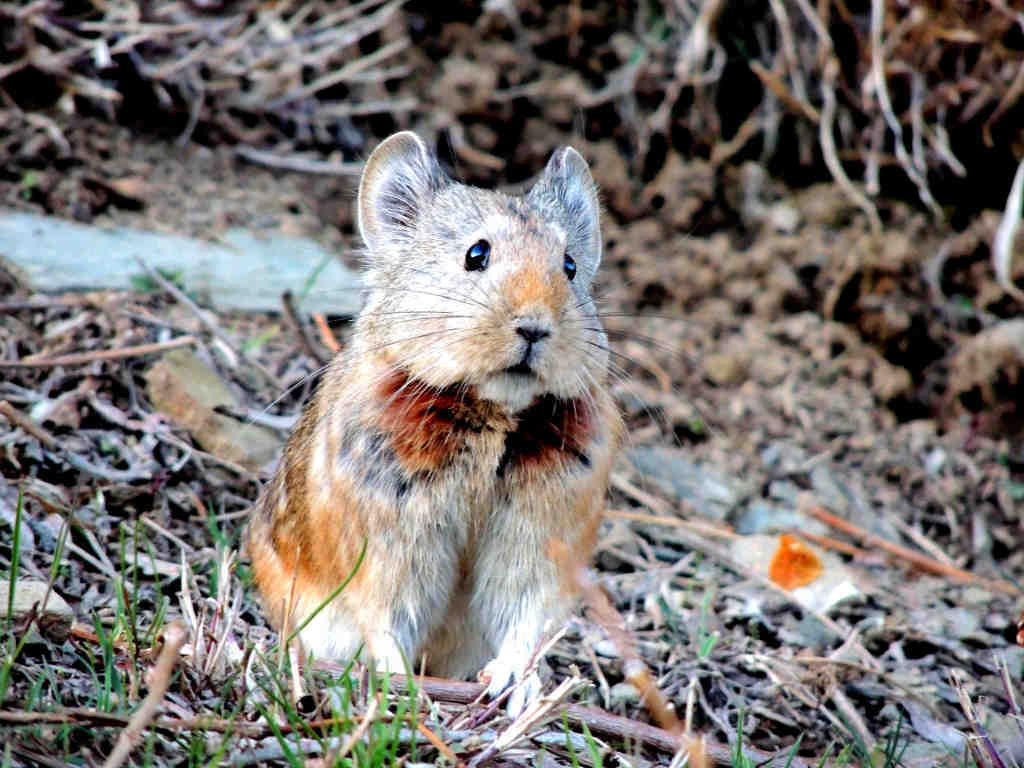
Ochotona royeli (Indian Pika)
Ochotona royeli (Indian Pika) in the Great Himalayan National Park
Ochotona royeli, commonly known as Indian pika, is a small, rabbit-like mammal that inhabits the high-altitude regions of the Great Himalayan National Park (GHNP). Although often overlooked due to its size and elusive behavior, this tiny mammal plays a significant role in GHNP’s alpine ecosystem. As a member of the pika family, it is closely related to hares and rabbits but is adapted to life in cold, rocky mountain environments.
Habitat and Range in GHNP
Indian pika can be found in alpine meadows, scree slopes, and rocky outcrops above 2,500 meters in GHNP. These areas are typically cold, with sparse vegetation and limited shelter. The pika survives here by building nests in rock crevices and creating “haypiles”—carefully collected stacks of dried vegetation that serve as food stores for the long winter months.
Pikas are particularly abundant in the Tirthan and Sainj valley, especially in undisturbed, high-altitude pastures near snowlines.
Diet and Behavior
Indian pika is a herbivore, feeding on grasses, herbs, mosses, and alpine flowers. It is mostly diurnal and can be seen during early mornings or late afternoons. You might spot one darting between rocks or hear its sharp, high-pitched call—often the only sign of its presence.
They don’t hibernate, so storing food is critical for their survival during the snowy Himalayan winters. This makes them important indicators of ecosystem productivity and seasonal changes.
Conservation Importance
Although not currently listed as endangered, Ochotona royeli is highly vulnerable to climate change. As temperatures rise, the alpine zone shifts upward, shrinking the pika’s already narrow habitat. Monitoring Royle’s pika populations in GHNP helps researchers track the impacts of global warming on mountain biodiversity.
Their sensitivity to heat and habitat loss makes them a key bioindicator species, providing insight into the health of Himalayan alpine ecosystem
| Common name | Indian Pika |
| Latin name | Ochotona roylei |
| Local name | Runda (Garhwali), Wuse-gagun ( Kashmiri) |
| IUCN/WPA/Indian status | Least concern/ IV / Locally Common |
| Social unit | Pairs and offspring |
| Size / weight | HBL: 15.5- 20.4 cm, EL: 1.7- 2.1 cm Wt. 100- 150 g |
| Description | The most common pika of the Himalayas, the Indian or Royle’s pika is a moderately large, richly coloured species, rufous- grey body, a chestnut head, shoulders and upper back, reddish purple throat and greyish white to dark grey under parts. The reddish colouration fades in winter, but the distinction between the upper and lower parts remains. It has moderately sized ears with sparse hair. The eyes are low- set and slightly arches. The female bears two pairs of mammae. |
| Behavior | It does not burrow but moves underground through existing burrow systems in rocky and scree slopes. It constructs hay piles, hoards limited food for winter and is crepuscular. |
| Distribution | Southern Ladakh and other regions of Jammu & Kashmir, Himachal Pradesh, Utterkhand, northern West Bengal and Sikkim |
| Habitat | Rocky or broken ground, pine deodar or rhododendron forest, and rock walls in human habitation. May prefer north-eastern aspect. |



